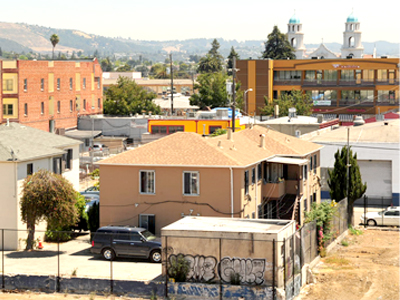
In early June, Oakland Police Chief Howard Jordan announced a significant reduction in crime during the previous 30 days. Citywide, -Burglaries were down 20%, -Robberies were down 24%, -Property Crimes were down 18% and -Violent Crimes were down 14%.
Chief Jordan attributed the reduction to enhanced community involvement, implementing additional resources and crime strategies, and partnerships with local, state, and federal law enforcement agencies. An example of the Oakland Police Department’s partnerships is Project Gideon III, a law enforcement initiative involving federal Alcohol, Tobacco, Firearms and Explosives agents and their collaboration with OPD officers.
A few weeks later, the department corrected its 30-day crime reduction statistics. A correct summary of crime for the city (below) was provided for the specified 30-day period, 4/07/12 through 5/4/12. Citywide,
-Murders down 56%
-Burglaries down 17%
-Robberies down 7%
-Property crimes down 17%
-Violent crimes down 9%
“Although the statistic used was incorrect, the premise of the public safety strategy is sound and has merit,” said Mayor Jean Quan.
Rosa Gonzalez Alvarado has seen a lot of changes in twenty years as owner of Los Cocos Salvadorian Restaurant on Fruitvale Ave.
“It used to be a very productive area, it was a lot business to do,” Gonzalez Alvarado said.
She explains that five years ago the restaurant hours were 8:30 am to 9:00 pm or 10:00 pm, depending how busy they were. Now the business hours are from 10:30 am to 7:00 or 8:00 pm. “Before you could see people walking on the streets very early or late,” Gonzalez Alvarado remembers with certain nostalgia. “Now people are cautious and after 6:00 pm there are few people around.”
Gonzalez Alvarado also mentions that crime has been reduced lately and that neighborhood ambassadors are really helping to reduce the number of crime incidents. She adds that the police are more responsive.
“Before they did not pay attention unless it was a death.”
When asked about her thoughts about some business owners who are armed with guns and other weapons, she says, “if they have the courage to have them and use them, it is good for self-defense”.
Luis Abundis is owner of Neveria Cinco de Mayo in the Fruitvale Village. “After 7:00 pm, it is very dangerous,” he says. “There is a lot of prostitution after 6:00 pm - I do not see any reduction of that. Our goal is to make a prosperous business but also a lot of people do not report the crime.” Abundis point out that Oakland police have presented reports showing that the Fruitvale area had one of lowest rates of reports for crime. “We do not report, we do not talk,” he says. “We have to teach the community to be involved, to report.”
In general, the city’s strategy is to target violence prevention efforts in the neighborhoods most impacted by violent crime. Various analyses of data on shootings and homicides conducted over a number of years have shown a consistent pattern: violent crime is concentrated in particular geographic areas of Oakland. According to maps provided by the mayor’s office, the highest rate of violent crime is in a small area near the intersection of International Blvd. and Seminary Ave.
The OPD had earlier announced that the city is divided into 35 policing beats, with four beats in East Oakland responsible for 65 percent of homicides. Another four beats in West Oakland account for 27 percent.
“For too long, the same Oakland neighborhoods have suffered from a disproportionate level of senseless violence,” Mayor Quan said. “Last year, three small children were killed, outraging our community and highlighting the need for an intensive response. We are committed to reduce violence in our city, and it is my hope that others will begin to come together around the issue of gun violence and its impact on all of Oakland, including these neighborhoods.”

